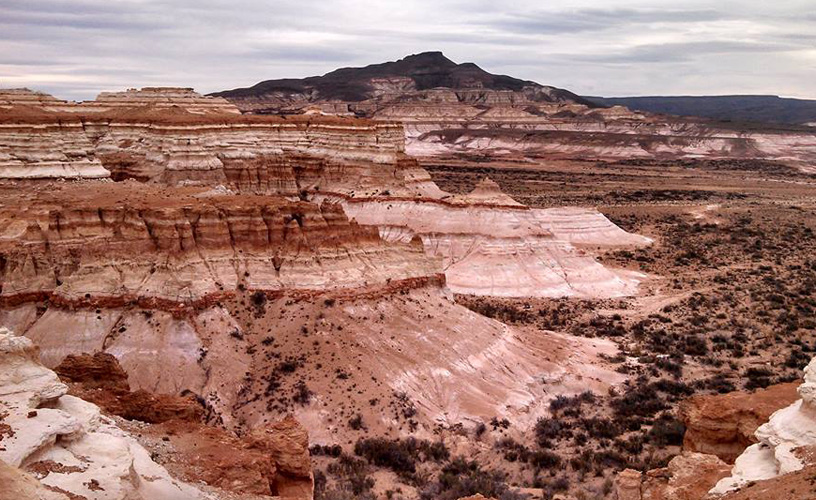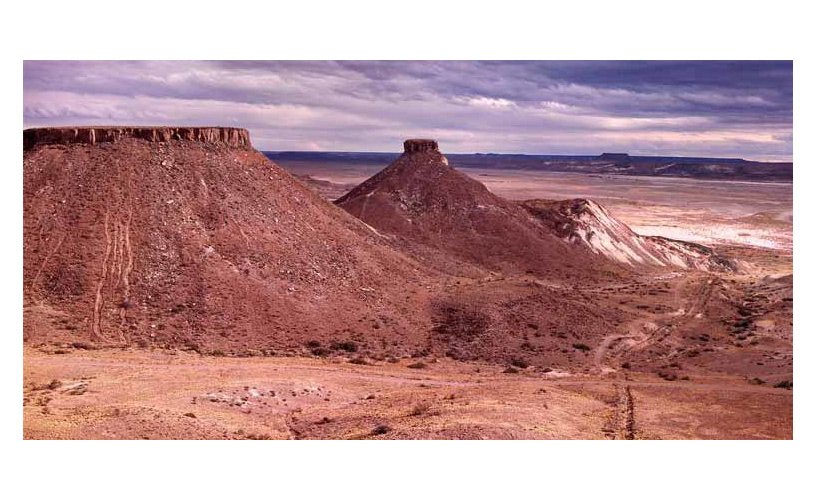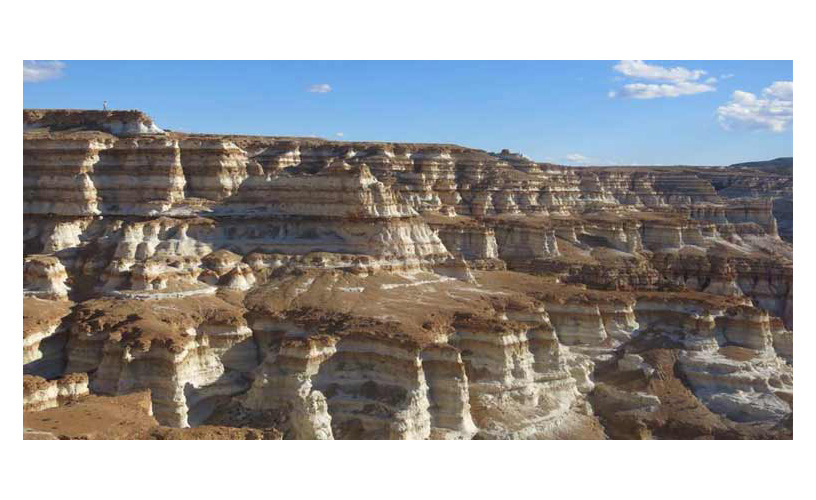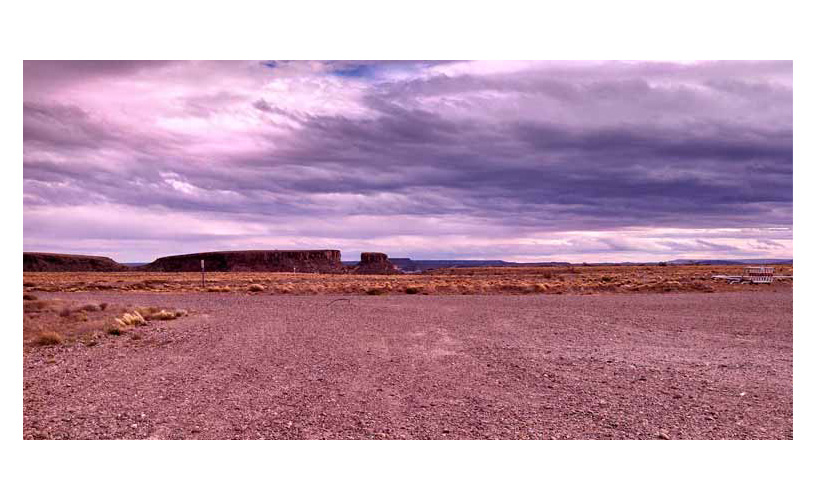The barren Patagonian plateau surprises us with its many attractions among which are the archeological sites playing a key role in understanding the culture of indigenous people long ago. Setting off from Pico Truncado we made our way to Cueva de las Manos and Piedra Museo.
High-Level Archeology
Thorough research has led to an understanding of the essence of the materials they employed, revealing the clever use these prehistoric men gave to them. A noteworthy example is the use of boleadoras a throwing weapon made of rounded stones at the end of interconnected crude leather straps.
The rock ledges and projections we saw had sheltered these Patagonian settlers in the late Pleistocene. They were primitive hunter-gatherers who left layers of imprints on the cave walls, depicting their daily activities and the number of people in the different tribes.
Our surprise turned to astonishment when we reached the main cave. “Hundreds of hands and other patterns in negative and positive have been found. Different hues of red, ocher, yellow, green, white and black were used. The human figures and guanaco hunting scenes have been studied by archeologists since 1972. It is incredible that these drawings and imprints on the rock can still be seen this clearly after so long,” said our guide as we strained our ears not to miss a word.
Should visitors prefer adventure in the desert, they can go to Estancia Cueva de las Manos (formerly Los Toldos) which offers accommodation and guided tours in 4-wheel drive vehicles as well as trekking. If they are well-trained, they can enjoy unique cave paintings in extremely rugged terrain.
Mónica Pons
Oficina de Turismo de Pico Truncado
Contact of the excursion or tour
Museo Histórico Regional de Pico Truncado
Gob. Gregores 414 y S.Arroyabe, Pico Truncado, Santa Cruz, Agentina
Phone: +54 297-4990048
Oficina de Turismo de Pico Truncado
Gob. Gregores y Urquiza, Pico Truncado, Santa Cruz, Agentina
Phone: +54 297-4992202
To reach Piedra Museo go 250 km towards the northwest of Santa Cruz, south of Deseado River.








